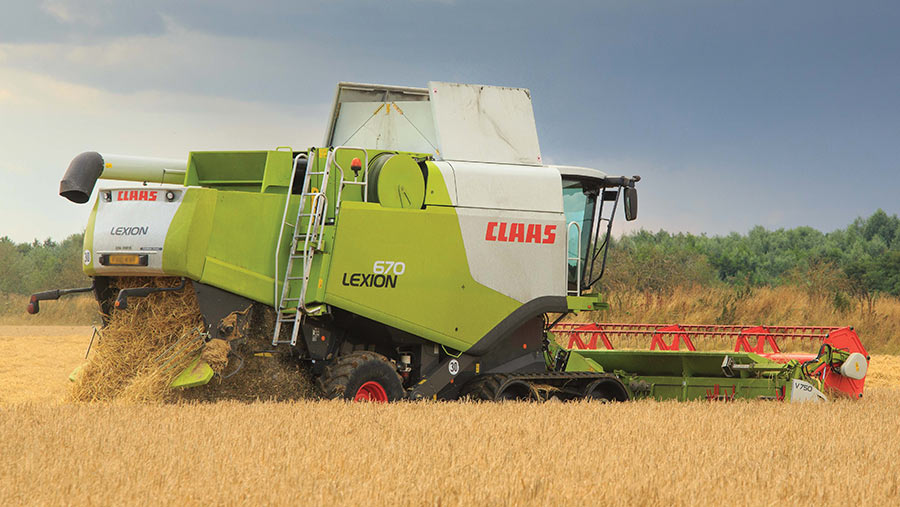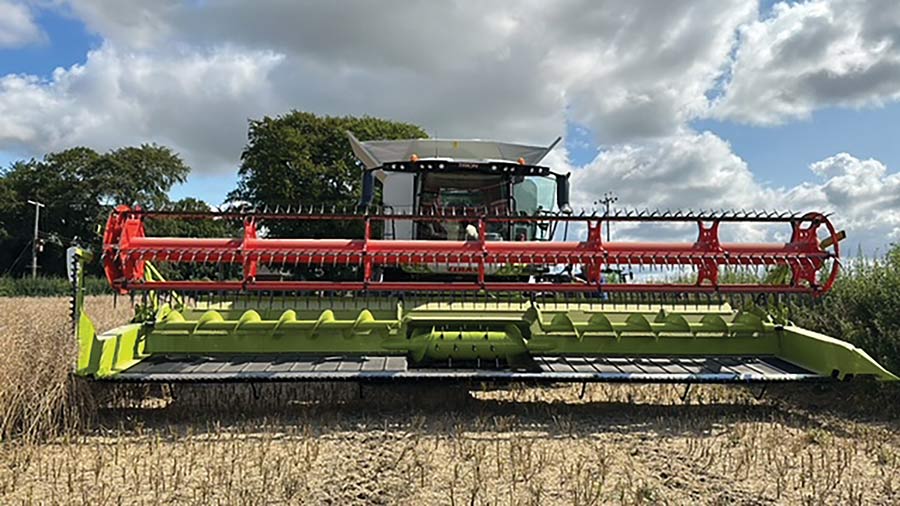Harvest 2023: Malting barley quality down in stop-start harvest
 © Tim Scrivener
© Tim Scrivener Farmers in southern and eastern England have been rounding up the winter barley harvest, with good specific weights and nitrogen content, although quality is slightly below last year.
One consequence of the changeable weather is that grain dryers are being used more this year as moisture contents are higher.
Lincolnshire
WoldGrain near Gainsborough has so far received 2,900t of feed and malting barley combined, as well as 600t of oilseed rape.
Feed barley, consisting mostly of Tardis and Orwell varieties, have had moisture contents ranging from 16.3% to 21%, with specific weights in the mid to high 60s (kg/hl).
“We have seen a couple of samples in the mid to high 50s, but it’s been generally good,” says operations manager Dan Murphy.
See also: Harvest 2023: The 5 top-yielding winter barley varieties map
Moving into malting barley, Craft makes up the majority, with good-quality screenings at 1.6% and the early loads with moisture at 13.6% before the weather broke, but now averaging 16.3%.
“We’ve had nothing particularly low [1.6%] or over 1.85% in nitrogen content, and specific weights have been up to 74.5kg/hl,” says Dan.
Oilseed rape has had good oil content, averaging 43-45%, while moisture has averaged 10.6%.
“Weather for the past week and the week to come is diabolical,” says Dan.
“As soon as the weather improves, we will get caught up with the oilseed rape and the rest of the winter barley, with winter wheat and spring barley to follow.”
WoldGrain expects to take in 6,000t of spring barley, and 40,000t of group four hard wheats and group one and two of milling wheats.
Norfolk
Moving south-east, Dewing Grain, near Aylsham, has also been seeing slightly lower qualities in the Craft winter malting barley compared to last year, as well as higher average moisture contents.
“In the tail-end of May, we had overcast weather averaging 12-14C, so retention on all winter barley is at 74.5%, which is lower than last year,” says grain trader Josh Dewing.
Overall, yields for Craft have averaged 9-10t/ha; levelling at 62.4kg/hl with 1.52% nitrogen and 15.7% moisture.
“Last year we switched to diesel dryers from gas due to the price, and we are very glad we did with grain coming in wetter,” he adds.
So far, feed barley intake stands at 13,000t, averaging 12.4% moisture.
Dewing Grain has not received any oilseed rape yet, but farmers report the crop to be averaging 6-9% moisture and yielding 2.5t/ha. “And oil content is certainly looking lower than last year,” adds Josh.
Kent
In Kent, Weald Granary near Maidstone has received 4,000t of winter feed barley Kingsbarn, with early loads (10 July) thin and high in screenings.
“The growing season was difficult, and we’ve seen lots of grass seed in screenings, but no real signs of significant ergot,” says managing director John Smith.
Early batches of feed barley achieved mid-50s specific weight, but are now averaging 62-65kg/hl.
The store has also received 1,500t of oilseed rape – averaging 9% moisture and 46% oil content.
Only one 15t load of Skyfall winter wheat has arrived, which was cut before the rain on Saturday (22 July) at 15.8% moisture content, with a specific weight of 77kg/hl, 13.14% protein, 353 Hagberg and screenings of 4%.
“Our members finished winter barley and rapeseed last week,” says John. “We won’t see much wheat until next week; we are a fortnight behind compared to last year.”
Wiltshire
Moving west to Manor Farm near Salisbury, Stephen Moore has cut 105ha of hybrid V367 high oleic, low linoleic acid oilseed rape, finishing at 16% moisture having started out at 7-9%. It yielded 3t/ha and had a good oil content at 46-47%.

© Stephen Moore
Next to combine will be 18ha of Dalguise seed oats, which have started lodging, but Stephen expects it to yield 8t/ha. “Everything will be fit together; the pressure will be on the combines,” he says.
“Winter wheat will probably be before spring barley.”
Stephen has 31ha of Crusoe winter wheat for seed and 60ha for milling, and expects below-average protein contents. He also has 121ha of Laureate spring barley, which he predicts will an average 7.5t/ha.

